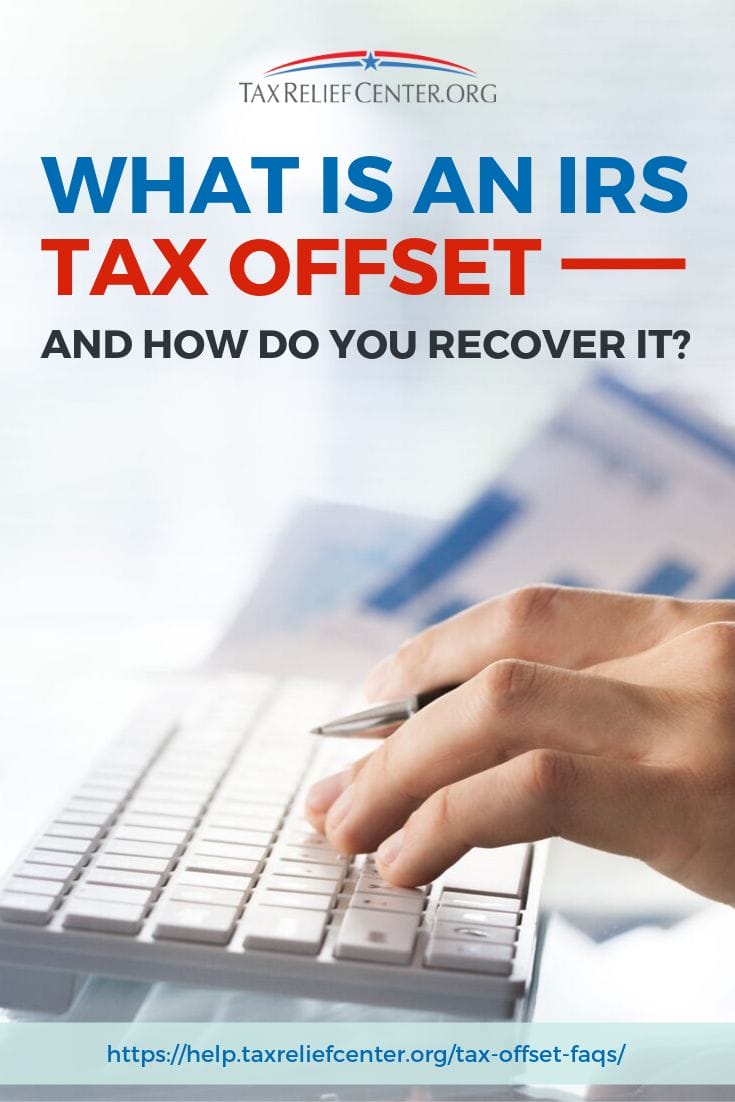You’ll put yourself in the perfect position to defeat an impending tax offset by understanding what it is and what action you can take once you receive a Notice of Intent to Offset in your mailbox.
RELATED: Where Is My Federal Tax Refund? What To Do If You Don’t Receive It
In this article:
- What Does Tax Offset Mean?
- What Is the Difference Between Tax Offset Vs Tax Credit?
- What Is the Difference Between Tax Offset Vs Rebate?
- What Differentiates a Tax Offset Vs a Deduction?
- How Does Tax Offset Work?
- Can I Check the Tax Offset Online?
- How to Avoid a Tax Offset
- How to Dispute a Tax Offset
- How to Stop Tax Offset for Student Loans
- How to Stop Tax Offset for Child Support
- What to Do If You File Jointly And You’ll Get a Tax Offset
Understanding and Beating IRS Tax Offsets
1. What Does Tax Offset Mean?
A tax offset or a tax refund offset means the government will use all or a portion of your tax refund to pay your outstanding debt. The government may deduct part of your refund to pay for the following unsettled items:
- Unpaid child and parental support
- Past due student loan payments
- Federal agency unsettled non-tax debt
- Income tax debt owed to the state
- Unemployment compensation debts from the state
2. What Is the Difference Between Tax Offset Vs Tax Credit?
A tax credit is a sum of money you can use to reduce a part of your tax obligation to the government. The government uses a tax credit to serve as a reward for certain actions like the installation of green roofing or energy saving devices for example.
3. What Is the Difference Between Tax Offset Vs Rebate?
They mean the same thing. Some people will use the word rebate in place of tax offset.
4. What Differentiates a Tax Offset Vs a Deduction?

The main difference is you can remove a tax deduction from your total taxable income right before the IRS calculates the actual amount of taxes you owe. A tax offset comes in once the IRS calculates your taxes, issues you a refund, but removes a part of your tax refund to pay for your debts.
Let’s use an example to make the differences clearer. Let’s say John, a husband and a father of three, earned $45,000 as a mechanic last year. Since taxpayers who file jointly and have three children can receive a maximum of $6,318 earned income tax credit, or EITC, John can get the amount as a deduction to his taxable income.
John’s new taxable is $38,682 — this is the amount the IRS will use to base the amount of taxes he owes.
After accounting all John’s liabilities, the IRS finds that he overpaid his taxes by $2,000 and moves to issue him a refund. Before they actually send him a check, the IRS saw that the state government overpaid John around $900 in unemployment insurance benefits.
The IRS subtracts $900 as a tax offset and gives John a tax refund of $1100.
5. How Does Tax Offset Work?
There’s a specific program under the Bureau of the Fiscal Service, or BFS, called the Treasury Offset Program, or TOP. TOP collects unpaid debts some taxpayers owe to state governments and federal agencies all over the country.
When a taxpayer lets an outstanding bill go unpaid for 90 days, the specific government agency checks if it is legal and enforceable to collect the debt. They then send the taxpayer’s information to the TOP.
The treasury staff adds the taxpayer’s names to their database and attempts to reach them to inform them about the impending offset. When they do decide to carry out the tax offset, the people at TOP send the individual taxpayer several notices, information about the debt, their rights on this matter, and methods of repayment.
After TOP performs the tax offset, they notify the taxpayer about the amount taken from their tax refund.
RELATED: Where Is My Tax Refund? Troubleshooting Tips For Receiving Your Refund
6. Can I Check the Tax Offset Online?
As of this writing, the Bureau of the Fiscal Service only maintains a hotline you can call to learn about any impending tax offsets against your refund. You can call 800-304-3107 and prepare to go through the TOP Interactive Voice Response system.
Kindly prepare your Social Security Number since the agents need it to pull up your data.
Persons with hearing disabilities can get in touch with the government’s Federal Relay Service by dialing 800-877-8339 to work with an agent on their tax offset inquiry.
7. How to Avoid a Tax Offset
The best way to avoid a tax offset is for taxpayers to pay any of their dues on time to avoid incurring debts. Agencies only contact the Treasury Offset Program because a taxpayer needs to settle their liability.
Taxpayers can also pay the outstanding debt outright as a means to avoid a tax offset. Individuals who want to pay their debts can do so by going to this page or by calling the Bureau of the Fiscal Service at 888-826-3127.
8. How to Dispute a Tax Offset

You can make efficient use of their time by talking to the agencies you owe instead of talking to the IRS and the BFS. Once you get in touch with the concerned agencies, you can request a review of your outstanding debt.
If the agency keeps insisting on collecting, even if the amount they’re collecting isn’t correct, the debt collection isn’t enforceable, or you’ve already paid, you can get in touch with your local taxpayer advocate for counseling and representation.
9. How to Stop Tax Offset for Student Loans
You have 65 days to talk to the Department of Education after you receive the Notice of Intent to Offset in the mail. You can challenge the decision and win a tax offset for the following reasons:
- You’ve already paid your dues.
- You’ve entered a debt rehabilitation program with your lender and making steady payments.
- You’re currently in bankruptcy.
- The agency has discharged the debt because of disability or bankruptcy.
- The debt is unenforceable.
- You’ve become permanently and totally handicapped.
10. How to Stop Tax Offset for Child Support
You will have to speak with the concerned agencies in order to settle any unpaid arrears and ask for an administrative review. Before actually speaking to them, collect the necessary evidence to prove your case, like payment receipts if you’re fully paid, or any documents pertaining to the amount of arrears you’re actually obliged to pay if you’re being overcharged.
If the tax offset is sizeable, you might want to consult a family law attorney to prevent the impending garnishment of your tax refund or receive a refund for your offset.
11. What to Do If You File Jointly And You’ll Get a Tax Offset
If you’re not the one responsible for incurring the debt, you can get part of the amount the government offsets by filing an Injured Spouse Allocation. Just submit Form 8379 to the IRS to get your part of the tax refund back.
By understanding all you can about a tax offset, you’re equipping yourself to better deal with the situation. Again, the best way to beat an IRS tax offset is to take note of your dues and proactively pay — that way you won’t be disappointed by the amount you receive in your succeeding tax refunds ever again.
Did you ever encounter a tax offset? How did you deal with the situation? Please share your stories in the comments section below.
If you owe back taxes, visit taxreliefcenter.org for more information on tax relief options.
Up Next:
- What Are Tax Extenders? | Everything You Need To Know
- How Does The Child Tax Credit Work?
- What Happens If You File Taxes Late | Frequently Asked Questions About Missing Tax Deadlines


